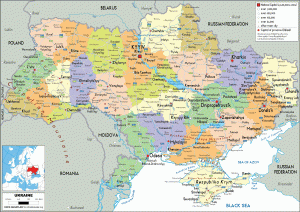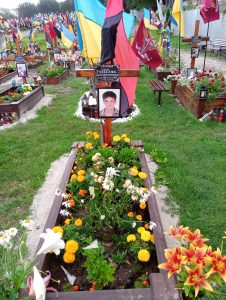 The apparent misdeeds and cover-ups of the administration of George W. Bush related to the terrorist attacks of 2001 remain in historical limbo. Neither presidents, nor the Congress, nor the media have gotten to the bottom of these tragic events. The 9/11 Commission Report, while providing hundreds of useful details, egregiously and unpardonably failed to examine the doings of senior government officials in the run-up to 9/11 and so must be considered a cover-up. As a result, the American public has not come to closure on the 9/11 attacks or on the anthrax mailings of 2001, nor is there a shared understanding of such a critical issue as the real reasons that the US attacked Iraq in 2003.
The apparent misdeeds and cover-ups of the administration of George W. Bush related to the terrorist attacks of 2001 remain in historical limbo. Neither presidents, nor the Congress, nor the media have gotten to the bottom of these tragic events. The 9/11 Commission Report, while providing hundreds of useful details, egregiously and unpardonably failed to examine the doings of senior government officials in the run-up to 9/11 and so must be considered a cover-up. As a result, the American public has not come to closure on the 9/11 attacks or on the anthrax mailings of 2001, nor is there a shared understanding of such a critical issue as the real reasons that the US attacked Iraq in 2003.
These failures have left the field open to wild speculations regarding these events, generally termed “conspiracy theories”, though this term obscures the crucial distinction between elaborate prospective plots involving many actors (silly in the context of an open society) and retrospective cover-ups that government officials who have made embarrassing mistakes are all too prone to engage in (very realistic and plausible). However, it is also true that simple prospective plots involving two or three individuals can occur.
Failure to reach a full, shared understanding of major events that led to interminable wars and occupations in the Middle East and Southwest Asia as well as to the undermining of civil liberties has helped to alienate Americans from their government and media, a triumph for America’s enemies. So we must make every effort to establish a clear common interpretation of what actually happened.
Tags: 9/11 attacks, Able Danger, al Qaeda, anthrax mailings, biodefense, Bush Administration, conspiracy theories, Dick Cheney, FBI, Flight #587, George W. Bush, I. Lewis Libby, Ivins, Jdey, Paul Wolfowitz, shoebombing, terrorism
 The failure of the US to fund Ukraine puts it at risk of a disastrous defeat at the hands of a merciless Russia. ChatGPT and I discussed several options for Ukraine in finding financing.
The failure of the US to fund Ukraine puts it at risk of a disastrous defeat at the hands of a merciless Russia. ChatGPT and I discussed several options for Ukraine in finding financing.
Tags: collateral, EIB, EU, frozen Russian assets, IMF, leading banks, lending, Russia-Ukraine War, Ukraine, US, WB
 If Congress rejects further U.S. military and financial support, the valiant Ukrainians and their democratic allies face a disastrous defeat.
If Congress rejects further U.S. military and financial support, the valiant Ukrainians and their democratic allies face a disastrous defeat.
To find other options, this writer brainstormed with Chat GPT. Our discussion led to a plan to form a U.S.- and EU-backed Coalition of the Willing, including Canada, the UK, Scandinavia, Germany, Poland, Baltic countries, and perhaps France as well as Japan, Korea, and Australia. While positioning troops, weapons, and materiel in Western Ukraine is not a realistic option at present, it might become a serious possibility if Russia advances and appears poised to conquer all of Ukraine. The U.S. would be a non-paying member that would supply intelligence, diplomacy, and coordination until such time as Congress might vote for funding.
Tags: American foreign policy, Biden, Coalition of the North, Congress, democratic alliance, EU, NATO, Putin, Russia, Russia-Ukraine War, Ukraine, Ukraine aid, US allies, Zelensky
 If neither the US nor the EU will fund Ukraine, ChatGPT and I discussed how American corporations could find it in their interest to collaborate deeply with Ukraine in the area of AI.
If neither the US nor the EU will fund Ukraine, ChatGPT and I discussed how American corporations could find it in their interest to collaborate deeply with Ukraine in the area of AI.
 Kenneth J. Dillon
Kenneth J. Dillon Would it make sense for Ukraine to seek outsourcing from US AI companies? As a replacement for Russian companies and individuals? Could this be done in an organized way, or simply ad hoc?
Tags: AI, cybersecurity, economic development, EU, Google, IT, Microsoft, Russia, Ukraine, US
 The famous spiral disk found in Phaistos, Crete in 1908 has long defied efforts to translate it or even to identify the language in which it is written or what kind of a document it might be (it is here in color to aid analysis). Though many scholars and amateurs have proposed theories and even translations, none has seemed persuasive to the great majority of observers. A skeptical view holds that the disk is a forgery, but most scholars reject this. Many scholars agree that the small sample of language in the disk makes a breakthrough very unlikely unless and until other samples of the writing are found.
The famous spiral disk found in Phaistos, Crete in 1908 has long defied efforts to translate it or even to identify the language in which it is written or what kind of a document it might be (it is here in color to aid analysis). Though many scholars and amateurs have proposed theories and even translations, none has seemed persuasive to the great majority of observers. A skeptical view holds that the disk is a forgery, but most scholars reject this. Many scholars agree that the small sample of language in the disk makes a breakthrough very unlikely unless and until other samples of the writing are found.
Tags: Ancient Greece, ancient history, crete, Etruscan, linguistics, Phaistos disk, Trojan
If we could accurately interpret ancient myths, they might give us insight into celestial and Earthly events that could revise our views of the history of the solar system. In turn, they could teach us about the forces at work and explain anomalies bequeathed to us by a long-hidden past. But how can we interpret these myths, the products of minds so far removed from ours? Are we doomed to speculate without ever achieving certainty?
Here we will interpret two Bronze Age myths that show how difficult it is to interpret them correctly and illustrate the high value such myths might contain. We will also explain why we should consider the interpretations correct, and note how simple it can be to understand a myth once the right interpretation becomes available.
 The apparent misdeeds and cover-ups of the administration of George W. Bush related to the terrorist attacks of 2001 remain in historical limbo. Neither presidents, nor the Congress, nor the media have gotten to the bottom of these tragic events. The 9/11 Commission Report, while providing hundreds of useful details, egregiously and unpardonably failed to examine the doings of senior government officials in the run-up to 9/11 and so must be considered a cover-up. As a result, the American public has not come to closure on the 9/11 attacks or on the anthrax mailings of 2001, nor is there a shared understanding of such a critical issue as the real reasons that the US attacked Iraq in 2003.
The apparent misdeeds and cover-ups of the administration of George W. Bush related to the terrorist attacks of 2001 remain in historical limbo. Neither presidents, nor the Congress, nor the media have gotten to the bottom of these tragic events. The 9/11 Commission Report, while providing hundreds of useful details, egregiously and unpardonably failed to examine the doings of senior government officials in the run-up to 9/11 and so must be considered a cover-up. As a result, the American public has not come to closure on the 9/11 attacks or on the anthrax mailings of 2001, nor is there a shared understanding of such a critical issue as the real reasons that the US attacked Iraq in 2003.


 Given the blockage of funding from the US and EU, could Ukraine obtain stopgap financing from Big Tech corporations with interests at stake? ChatGPT and I discussed options.
Given the blockage of funding from the US and EU, could Ukraine obtain stopgap financing from Big Tech corporations with interests at stake? ChatGPT and I discussed options. If Congress rejects further U.S. military and financial support, the valiant Ukrainians and their democratic allies face a disastrous defeat.
If Congress rejects further U.S. military and financial support, the valiant Ukrainians and their democratic allies face a disastrous defeat.


